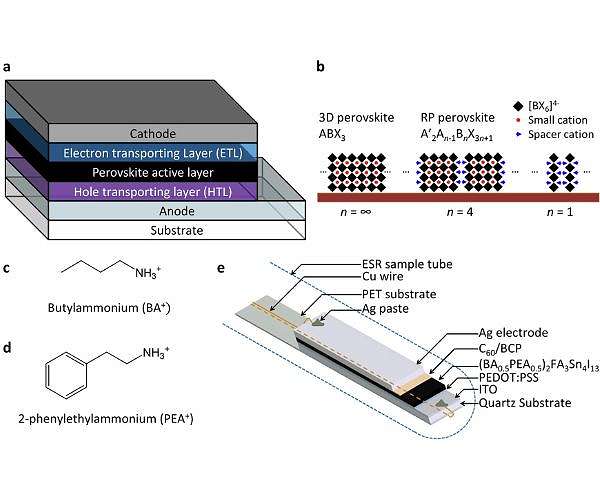Improving sustainability and efficiency in tin -based perovskiet solar cells
Tin-based perovskiet solar cells are praised as a promising alternative to the next generation solutions for solar energy because of their high efficiency, flexibility and potential for cheap prints. The replacement of lead by Tin to prevent environmental problems that are linked to leading toxicity, however, forms its own challenges. Tin tend to oxidize quickly results in reduced performance and sustainability compared to leaders based on lead.
Researchers have developed a method to improve the stability of tin -based perovskiet by including large organic cations in the perovskiet structure. This results in a unique two-dimensional layered configuration that is known as Ruddlesden-Popper (RP) tin-based perovskites. Despite the potential, the precise internal structure and the mechanism, which improves this configuration, the performance has remained unclear.
In this study, researchers used Electron Spinresonance (ESR) to analyze the internal behavior of the RP perovskiet solar cell during operation at the microscopic level. Their findings revealed two important insights about the interaction of the materials under different circumstances.
First, when the RP Perovskiet Zonnecel was not exposed to light, the holes in the hole transport layer in the RP -Perolovskiet. This movement created an energy barrier on the interface between the gattransport layer and the RP -Tin Perovskiet, which prevents electrical current and leads to better performance.
Secondly, when exposed to sunlight, the energy-rich electrons produced by short wavelength light (such as ultraviolet rays) from the RP-Tin Perovskiet to the hole transport layer. This transfer also increased the energy barrier, improving the efficiency of the device.
Insight into the mechanisms behind these performance improvements is crucial for the development of tin-based perovskite solar cells with greater efficiency and longer lifespan. These findings can offer important insights for future progress in the field of solar energy.


